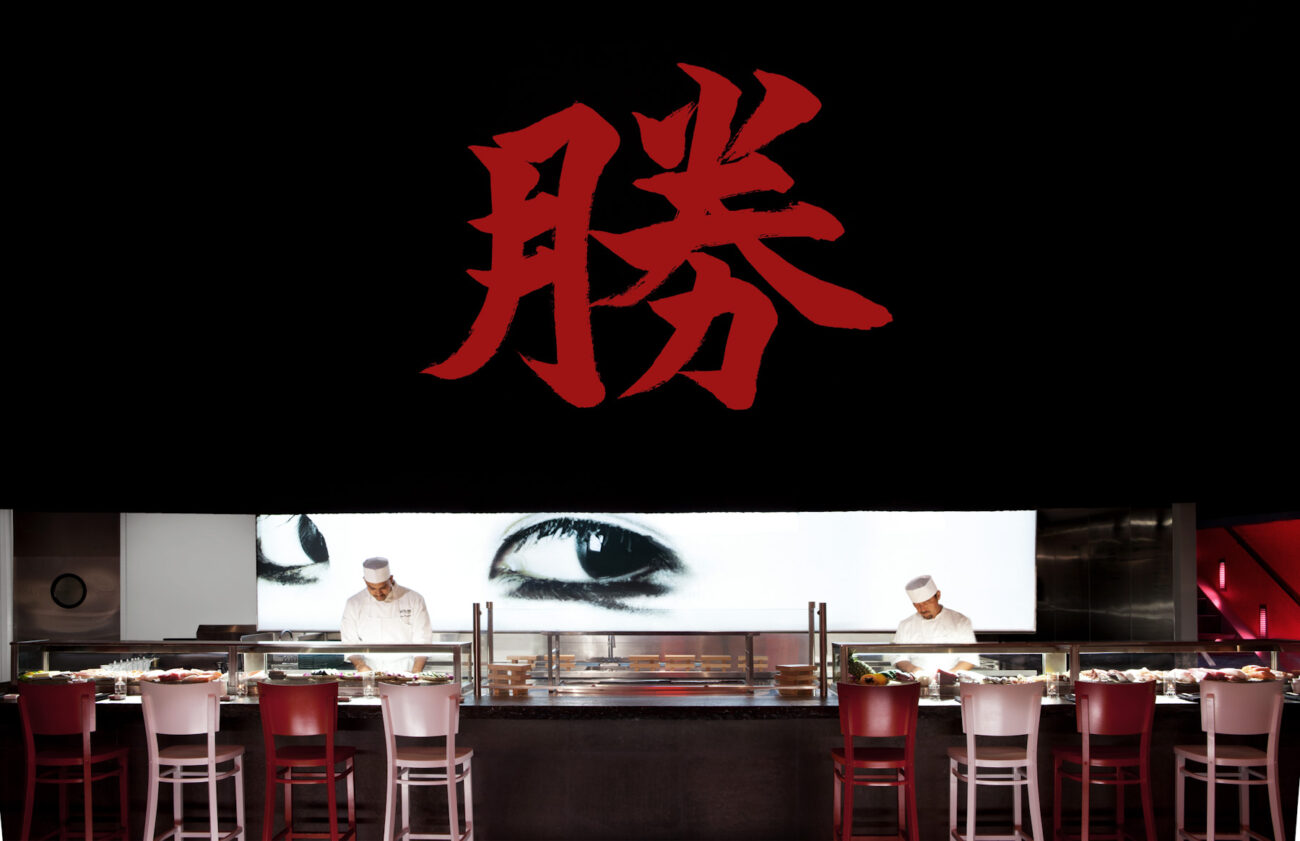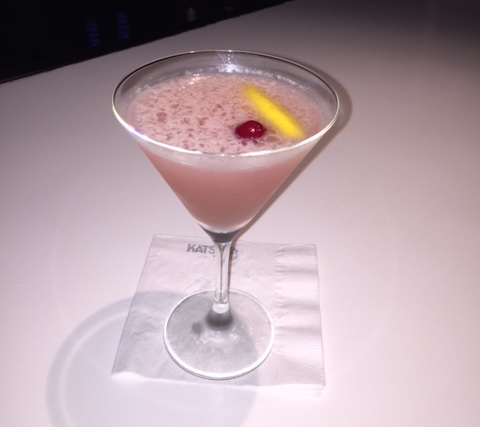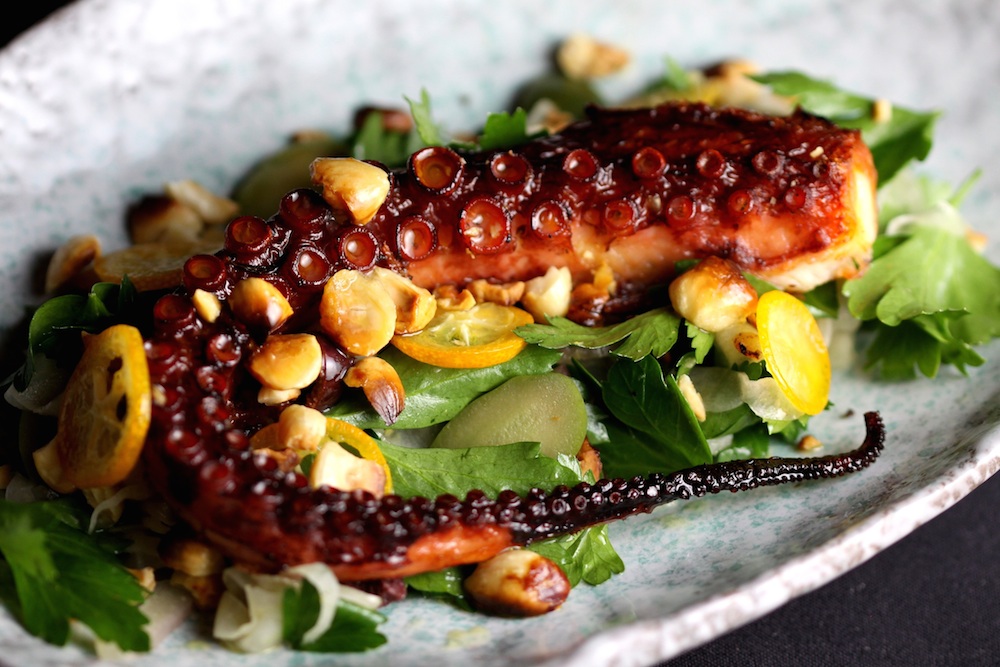
By Jacquelynn Powers Maurice | Contributing Writer
“We work very hard to source our products both LOCALLY and from JAPAN.”
— Executive Chef Jose Icardi, Katsuya by Starck
Crispy Rice with Spicy Tuna. Jamón Ibérico. Baba Ghanoush. Champagne cocktails poolside. Welcome to the world of the SBE Hospitality Group in South Beach, where high-profile chefs have perfected the art of dining and lounging. Here in Miami, their top hotspots—The Bazaar by José Andrés, Katsuya by Starck, Cleo, Restaurant Michael Schwartz, and Hyde Beach—can be found in the stylish and sleek SLS, Redbury, and Raleigh hotels along Collins Avenue. While these venues focus on unique global cuisines and themes, they have a few factors in common: an emphasis on shared plates, chic clientele, and creative food and beverage programs.
Come along to a world unlike any other—the world of SBE.
The Bazaar By José Andrés

James Beard award-winning Chef José Andrés launched his prestigious Bazaar restaurant at the SLS South Beach in 2012. The eatery is the first thing guests see as they walk through the hotel’s lobby, and it is impressive. The space spans two front and center dining rooms—one called Blanca, the other Roja— designed by renowned French designer Philippe Starck. Then there’s Bar Centro which overlooks the pool, an ideal place to try one of Chef Andrés’ signature Gin and Tonics or Caipirinhas. The food here reflects global influences with an emphasis on Spanish-style cuisine.
“Everything starts with Chef José Andrés’ culture of food and eating,” explains Jimmy Pumarol, general manager of The Bazaar. The chef’s debut restaurant pays homage to his Spanish heritage and dabbles in global flavors, while his subsequent eateries have focused more specifically on the cuisines of Peru, Latin America, Mexico, and Japan. “The Bazaar encases all of José’s different experiences in one restaurant,” Pumarol continues. “On our menu, you will find Sashimi and Siu Mai (pork dumplings). There are influences from Asia, Cuba, and the Caribbean. But the roots are in Spain.”
Scan the menu and you will discover two distinct sections. The first is described as “Miami Meets the World,” clearly international in scope, evoking Singaporean flavors with Japanese influences. Think Siu Mai with pork, shrimp, and peanuts; Bao con Lechon with pork belly; Liquid Mango Nigiri with sea urchin and shiso; and Baby Japanese Peaches with Burrata, hazelnuts, and arugula.

The second aspect of the menu is more of what you might expect from Chef Andrés, titled, “Spain, Yesterday and Today.” Throwback dishes meet contemporary cuisine with items like Patatas Bravas with spicy tomato sauce; Sea Urchin with butter, black pepper, and toasted bread; and José’s Tacos with caviar and Jamón Ibérico.
And despite some unpredictable culinary techniques—items prepared using liquid nitrogen, for example—this is not molecular gastronomy. “José prefers to call it creative,” Pumarol asserts. “He deconstructs different elements of traditional cuisine, and makes it easy for people to understand.” With such an expansive menu—there are 65 dishes in total—The Bazaar allows groups to sample many flavors and specialties, from Smoked Oysters with apple mignonette to Cuban Coffee-Rubbed Churrasco with passionfruit. (Find the recipe here!)
Indeed, this is a food lover’s paradise. Fans can catch some of the prep action from The Bazaar’s three open kitchens, and most of the servers are gourmands as well, many with kitchen experience. “You’re being taken care of by professionals who love food, wine, and cocktails,” says Pumarol. “They can read the type of experience you want to have at The Bazaar—whether you are here on business, with your family, or celebrating with friends.”
Katsuya by Starck

The Katsuya experience begins once you walk past the SLS South Beach lobby and through the glass doors on your left. Seven nights a week, hostesses and servers cheerfully yell out, “Irasshaimase!”—a Japanese welcome. Eye-catching photographs adorn the walls featuring a pair of luscious red lips, eyes peering over the sushi bar, and a woman in traditional Japanese dress. Designed by Philippe Starck, the main dining room is modern and minimalist. A resident art program in the upstairs Dragon Lounge displays local artists’ paintings for six-month spans.
Yet, the beautiful dishes flowing from the open kitchen and sushi bar, created by Master Sushi Chef Katsuya Uechi, are the main attractions. Uechi began his eponymous restaurant in Los Angeles, and has since expanded Katsuya restaurants to Las Vegas, South Beach, and, soon, the Bahamas in the new Baha Mar project.
Uechi is most known for his playful adaptations of Japanese cuisine. Popular menu items include Yellowtail Sashimi with Jalapeño, Crispy Rice with Spicy Tuna, Baked Crab Hand Rolls, Creamy Rock Shrimp, and Whitefish Sashimi with Crispy Onion. Diners also crave the meat, seafood, and vegetables cooked over the robata grill, which heats up to 1,000 degrees for a perfect sear every time.

Executive Chef Jose Icardi, originally from Argentina, has been at the helm of this location ever since the 140-seat Katsuya debuted in Miami in June 2012. “We work very hard to source our products both locally and from Japan,” Icardi says. “Cost is not an issue. We try to give the guests the best quality. The majority of the fish comes from Japan, while the snapper, pompano, crab, and razor clams are all sourced locally.” The 10-ounce Wagyu Rib-Eye is another savory specialty, served with maitake mushrooms and truffle butter.
Of course, sushi is the cornerstone of the Katsuya menu. Seafood-savvy guests prefer to perch along the sushi bar where they can interact directly with the chefs. “We display the fish so people can see what they want to order,” Icardi explains. “No one else has a seafood presentation at a sushi bar like this in Miami.”
If cocktailing is more your thing, head upstairs to the Dragon Lounge where homemade libations are crafted with Japanese ingredients such as passionfruit, yuzu, pickled ginger, and lychees. It’s no surprise that sake is a popular drink among well-heeled guests.
Cleo

Mediterranean restaurants were once as scarce as snowballs in Miami. Helping to fill that void, Cleo recently debuted at the Redbury Hotel. Created by Chef Danny Elmaleh, the charming concept—with outposts in Los Angeles and Las Vegas—focuses on shared plates, mezzes, flatbreads, tagines, and grilled meats, plus a multitude of vegetarian-friendly options.
The ambience is instantly warm and welcoming. The two-level, 250-seat restaurant is festooned with candles, hanging chandeliers, decorative plates on the wall, and, of course, a floor-to-ceiling portrait of Cleopatra. “The décor is rustic and cozy,” says Diedre Burks, Cleo’s general manager. “The aroma of different herbs, spices, and garlic welcomes you.”
Exotic and traditional tapas-style plates evoke a Mediterranean influence, and include Lamb Kebabs, Grilled Octopus, Falafel, and Lamb Shawarma. Flatbreads are baked onsite with toppings like mushrooms, Gruyère cheese, artichokes, clams, and kale. Guests lust after the Brussels Sprouts, dressed with capers, parsley, almonds, and red wine vinaigrette.
Yet, the beautiful dishes flowing from the open kitchen and sushi bar, created by Master Sushi Chef Katsuya Uechi, are the main attractions. Uechi began his eponymous restaurant in Los Angeles, and has since expanded Katsuya restaurants to Las Vegas, South Beach, and, soon, the Bahamas in the new Baha Mar project.
Uechi is most known for his playful adaptations of Japanese cuisine. Popular menu items include Yellowtail Sashimi with Jalapeño, Crispy Rice with Spicy Tuna, Baked Crab Hand Rolls, Creamy Rock Shrimp, and Whitefish Sashimi with Crispy Onion. Diners also crave the meat, seafood, and vegetables cooked over the robata grill, which heats up to 1,000 degrees for a perfect sear every time.
Executive Chef Jose Icardi, originally from Argentina, has been at the helm of this location ever since the 140-seat Katsuya debuted in Miami in June 2012. “We work very hard to source our products both locally and from Japan,” Icardi says. “Cost is not an issue. We try to give the guests the best quality. The majority of the fish comes from Japan, while the snapper, pompano, crab, and razor clams are all sourced locally.” The 10-ounce Wagyu Rib-Eye is another savory specialty, served with maitake mushrooms and truffle butter.
Of course, sushi is the cornerstone of the Katsuya menu. Seafood-savvy guests prefer to perch along the sushi bar where they can interact directly with the chefs. “We display the fish so people can see what they want to order,” Icardi explains. “No one else has a seafood presentation at a sushi bar like this in Miami.”
If cocktailing is more your thing, head upstairs to the Dragon Lounge where homemade libations are crafted with Japanese ingredients such as passionfruit, yuzu, pickled ginger, and lychees. It’s no surprise that sake is a popular drink among well-heeled guests.

Enhance your evening with freshly muddled cocktails, many with a Mediterranean influence. The signature drink is the Cleo Colada, made with Ciroc coconut vodka, pineapple juice, fresh lime, and egg white. Bring the party to the popular front patio, or the rooftop bar, which will debut this spring with cocktails and light bites. And put Cleo on your radar for your next trip to the Bahamas, as Elmaleh will bring his award-winning cuisine to Baha Mar in spring 2015.
Another must see? The nightly Plate Break ceremony. Burks explains: “Once a night we do a ‘plate break,’ which is an old Greek tradition. We pick one person to break a plate, and then walk next to the Cleopatra portrait and turn the music off. We all clap, clap, clap, and scream out ‘Opa!’ The whole room is energized. Now, guests are starting to request the honor of breaking the plate.”
Restaurant Michael Schwartz

For a seasonal dining experience on South Beach, guests gather at Restaurant Michael Schwartz in the iconic Raleigh South Beach. Occupying the dazzling west deck of the hotel’s baroque pool, the James Beard award-winning chef’s beachside restaurant serves thoughtfully sourced American cuisine at lunch, dinner, and Sunday brunch.
Dining on the exotic pool deck beneath a canopy of trees and twinkling lights, guests are transported to a place far from the bustle of everyday life. Start your night with a craft cocktail like the Oaxacan, made with Bombay Sapphire gin, Sombra mezcal, fresh pineapple, jalapeño, agave, and a guajillo salt rim. The white bar’s new tap also rotates draft beers from local breweries.
The menu highlights the beauty and simplicity of fresh ingredients from local fishermen, farmers, ranchers, and artisans. Snack on Crispy Hominy with chile and lime, vibrant Charred Shishito Peppers, or Wahoo Ceviche with papaya, red onion, avocado, chiles, citrus, and cilantro. Entrées include Grilled Octopus with marguez, piquillo peppers, pistachios, red onion, plumped dates, and chermoula vinaigrette; Pan-Roasted Half Poulet Rouge Chicken with farro, roasted corn, pepper, and jus; and Grilled Swordfish with saffron-farro risotto, pea shoots, and paprika-pickled chickpeas.
Hyde Beach
“Our main goal is hospitality. Every customer needs to be treated the same whether they have FIVE BUCKS in their pocket or $10,000.”
— General Manager Dimitri Mitropoulos, Hyde Beach
Picture this: women in bikinis, men spraying Champagne, and a pool packed with merrymakers, all set to the beat of the hottest DJs in the world. This is the scene at Hyde Beach, the poolside beach club at the SLS Hotel. The experience features pool and beach access, a charming garden area, and evening bottle service. Open to the public seven days a week, Hyde Beach transitions to a night club on Thursdays, Fridays, Saturdays, and Sundays.

“We consider ourselves high-energy,” notes Dimitri Mitropoulos, Hyde Beach’s general manager. “Saturday is one amazing pool party. We want you to start dancing. We want you to jump into the pool.” With no set end time, pool parties can last all night.
For a relaxed lunch experience, visit the garden for sophisticated snacks by José Andrés, like King Crab Legs, Snapper Ceviche, and refreshing Tzatziki, Watermelon, and Tomato Salad.
“Our main goal is hospitality,” says Mitropoulos. “Every customer needs to be treated the same whether they have five bucks in their pocket or $10,000. We want our clients having fun—and coming back.”
















